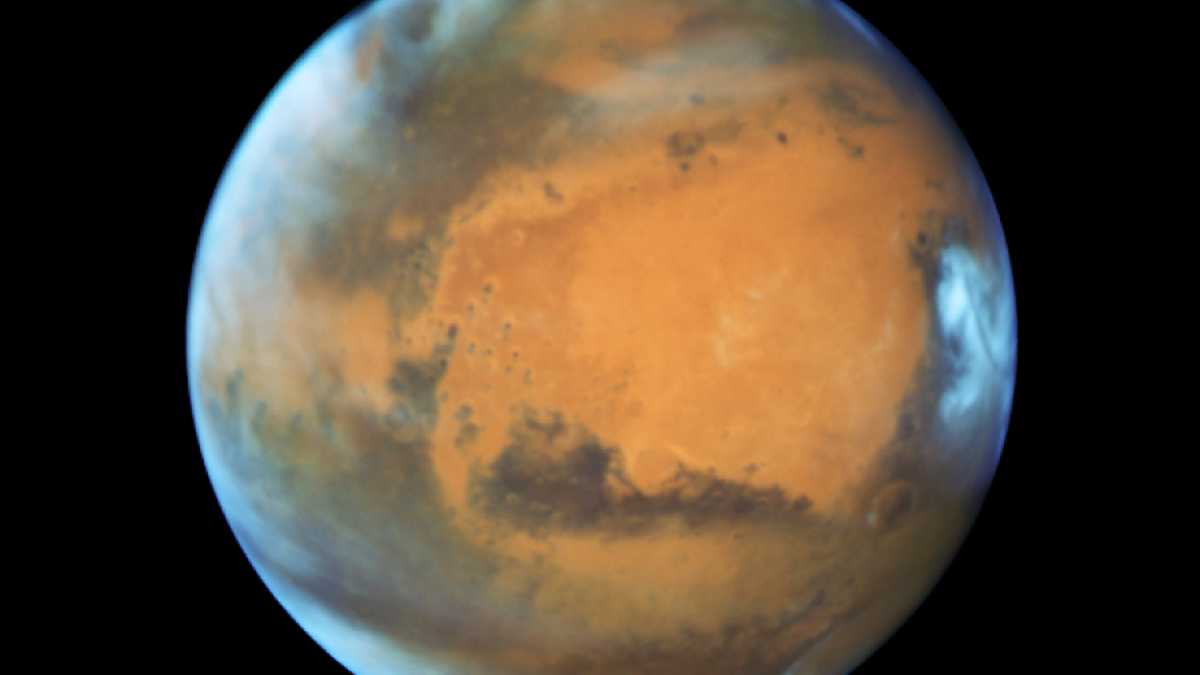
Mars in opposition 2016. (NASA)
The early Martian atmosphere likely didn’t contain enough carbon dioxide to keep the planet warm enough for liquid water, according to National Aeronautics and Space Administration scientists.
New findings further complicate the mystery of how the chilly planet could have once been home to the lakes and rivers that left their marks on its surface.
Geological evidence from the Curiosity rover shows evidence of lake beds and river deposits on Mars that planetary scientists generally believe could have been formed only by the presence of liquid water billions of years ago. But they have pondered how a young Sun, shining more faintly than it does today, could possibly keep the red planet above freezing long enough for liquid water to shape the land.
One theory suggests Mars’s atmosphere, thin today, once contained much more carbon dioxide warming the planet as a greenhouse gas. Previous work has failed to find a sufficient quantity of carbonates, minerals expected to form on the surface of Mars if carbon dioxide were present in the atmosphere, and the new research throws another monkey wrench in this theory.
The research, published in the Proceedings of the National Academy of Sciences, analyzes data from Curiosity’s analysis of rocks from Gale Crater, which scientists believe was home to an ancient and long-lived lake. The analyzed rocks were approximately 3.5 billion years old, dating from the time scientists believe was the end of Mars’s wet period.
The rover’s X-ray diffraction instrument, which identifies the minerals present in a rock sample, didn't turn up any carbonates. Using that evidence and the amount of other minerals present, the researchers calculated that the Mars atmosphere must have contained very little carbon dioxide. “What we see is a lot lower than the amount needed to produce the greenhouse effect to have lakes and rivers around at that time,” said Thomas Bristow, a research scientist at the NASA Ames Research Center in Moffett Field, Calif., and lead author on the paper. An atmosphere with plenty of carbon dioxide would be the simplest answer, Dr. Bristow said, but “it doesn’t seem that easy solution will work in this case.”
The puzzle remains of how Mars was once warm enough to support liquid water.
One potential explanation is that Mars was icy overall with brief repeated warm periods in which water melted and formed the suggestive features, said Paul Niles, a planetary scientist at NASA’s Johnson Space Center who wasn’t involved in the research. “I think the key problem is how long these liquid water events lasted,” Dr. Niles said, but determining the date of geologic features on Mars is difficult. Meanwhile, chemical data like that from the new research seem to conflict with geological data, which makes for “a big divide” in scientific opinion, he said.
